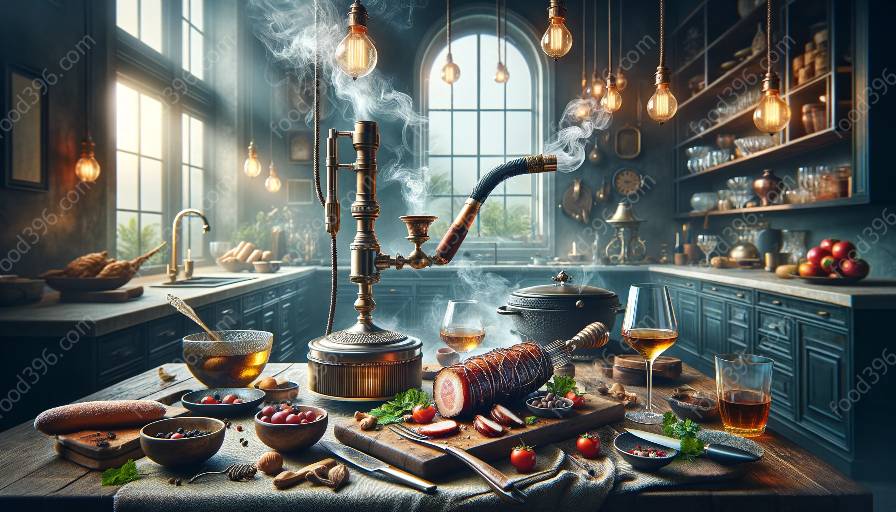Smoking meat is an ancient culinary technique that infuses a rich, smoky flavor and tender texture into various cuts of meat. Whether you're an experienced pitmaster or a novice griller, mastering the art of smoking can elevate your cooking skills to new heights.
There are different methods and techniques of smoking meat, each offering its own unique flavor profile and cooking experience. From traditional wood-fired smokers to modern electric models, the options are endless. In this comprehensive guide, we'll explore the fascinating world of smoking meat, including the essential tools, various cuts of meat to smoke, and tips for achieving mouthwatering results.
Essential Tools for Smoking Meat
Before diving into the art of smoking meat, it's crucial to have the right tools at your disposal. Here are the essential equipment and supplies you'll need:
- Smoker: Choose from different types of smokers, such as offset, vertical, pellet, or electric smokers, based on your preference and cooking style.
- Wood Chips or Chunks: Select high-quality wood chips or chunks, such as hickory, mesquite, applewood, or cherry, to impart specific flavors into the meat.
- Thermometer: Invest in a reliable meat thermometer to monitor the internal temperature of the meat for safe and precise cooking.
- Meat Brine or Rub: Prepare a flavorful brine or rub to season the meat before smoking, enhancing its taste and tenderness.
- Meat Cuts: Choose a variety of meat cuts like brisket, ribs, pork shoulder, or poultry for smoking, each with its unique characteristics and flavors.
Choosing the Right Cuts of Meat
When it comes to smoking meat, selecting the right cuts is essential for optimal flavor and tenderness. Here are some popular cuts of meat to consider for smoking:
- Brisket: Known for its rich marbling and bold beefy flavor, brisket is a favorite choice for low and slow smoking, resulting in tender, succulent slices of meat.
- Ribs: Whether it's pork ribs or beef ribs, the slow smoking process can transform these cuts into fall-off-the-bone goodness, bursting with smoky goodness.
- Pork Shoulder: Also known as pork butt, this cut is ideal for smoking, yielding moist and flavorful pulled pork that's perfect for sandwiches and tacos.
- Poultry: From whole chickens to turkey, smoking poultry can infuse delicate smoky nuances and moist, juicy meat, creating a delectable dining experience.
Smoking Techniques
Now let's explore different smoking techniques to elevate your culinary skills:
Low and Slow Smoking:
This traditional method involves cooking meat at a low temperature, typically between 225 to 250 degrees Fahrenheit, for an extended period, resulting in tender, flavorful meat with a distinct smoke ring.
Cold Smoking:
Cold smoking is done at temperatures below 100 degrees Fahrenheit, ideal for infusing a subtle smoky flavor into items like cheese, fish, or cured meats without cooking them.
Hot Smoking:
Hot smoking is performed at higher temperatures, ranging from 180 to 300 degrees Fahrenheit, perfect for cooking and smoking the meat simultaneously, resulting in deliciously tender and flavorful results.
Flavoring with Wood
The type of wood used for smoking significantly impacts the flavor of the meat. Here are some popular wood choices and their flavor profiles:
- Hickory: Known for its strong, smoky flavor, hickory is perfect for pork, ribs, and bacon.
- Mesquite: With its intense, earthy flavor, mesquite is ideal for bold meats like beef, especially brisket and steaks.
- Applewood: Offering a sweet and mild smoke, applewood complements poultry, pork, and even vegetables with its delicate flavor.
- Cherry: Cherry wood adds a subtle, fruity smoke that pairs well with a variety of meats, including pork, chicken, and lamb.
Tips for Mouthwatering Results
Here are some valuable tips for achieving exceptional results when smoking meat:
- Patience is Key: Smoking meat is a slow process, so be patient and allow enough time for the flavors to develop and the meat to reach the perfect tenderness.
- Consistent Temperature Control: Maintain a consistent and optimal smoking temperature throughout the cooking process to ensure even cooking and flavor absorption.
- Rest and Carve: Once the meat is smoked to perfection, allow it to rest before carving to let the juices redistribute, ensuring a moist and flavorful outcome.
- Experiment with Flavors: Don't be afraid to experiment with different wood flavors, seasonings, and marinades to create unique and personalized flavor profiles.
- Monitor Internal Temperature: Use a meat thermometer to monitor the internal temperature of the meat, ensuring it reaches the desired level of doneness for safe consumption.
By mastering the art of smoking meat and exploring various food preparation techniques, you can create unforgettable culinary experiences for yourself and your loved ones. Embrace the time-honored tradition of smoking and savor the rich flavors and aromas it brings to your table.

